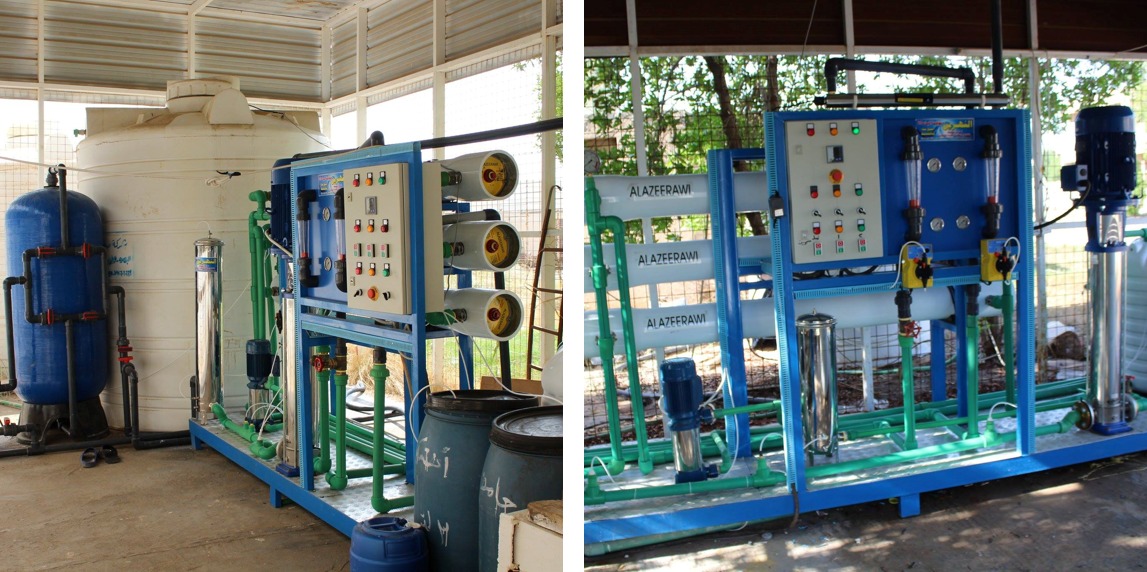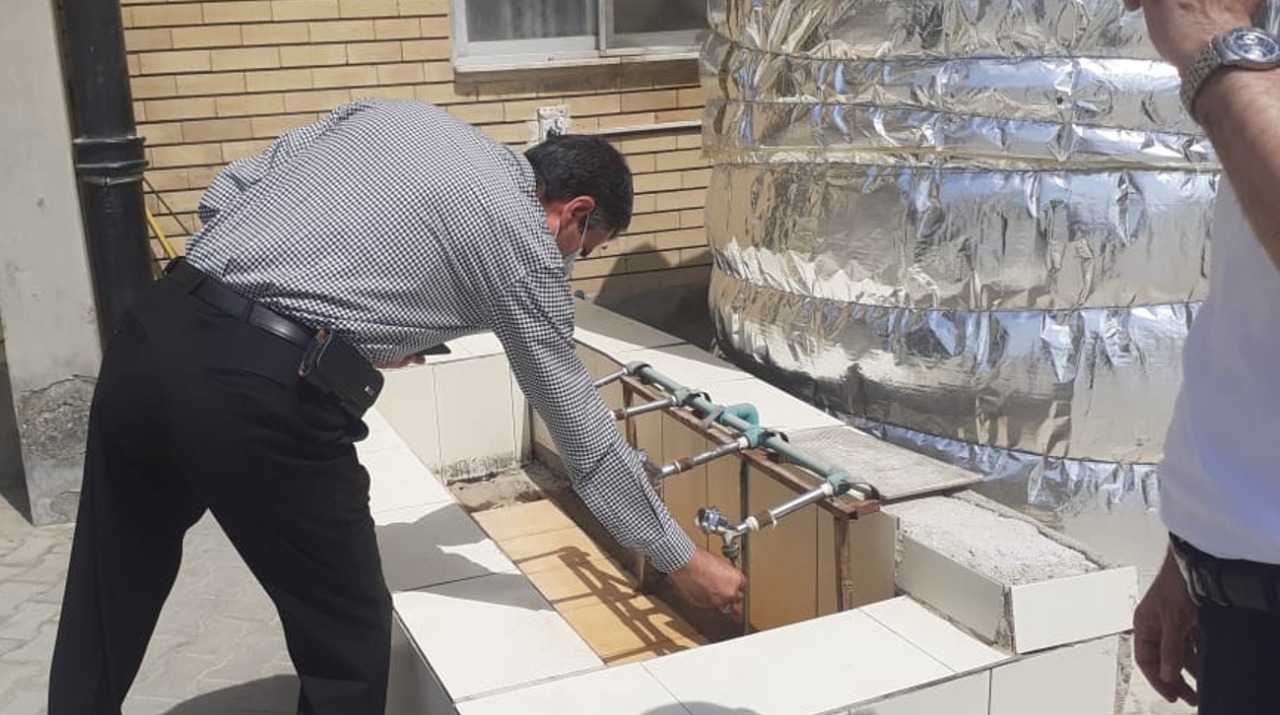University of Basrah campus drinking water standards
There is a set of standards used to determine the suitability of drinking water used on campus, which conform to Iraqi standard specifications, the most prominent of which are as follows:
- Alkalinity or basicity: This means the totality of substances capable of balancing the pH of water. Alkalinity refers to the ability to interact with an acidic solution and the extent to which it maintains the pH from changing. Therefore, it differs from the pH, which the higher its value, the greater the percentage of solids in it. In addition to the high percentage of the same solids in the water, causing a change in its taste.
- Electrical conductivity: This property is used to measure the ability of water to conduct electrical current, and it is an easy and useful procedure to determine the level of water quality in general, as each body of water has a specific range of conductivity percentage, and this is in the case of normal conditions.
- Color: The color element is considered a basic indicator of the presence of pollutants in water, such as organic and inorganic substances, such as metals, aluminum, copper, iron, and manganese, and other pollutants such as dissolved solids and foamy substances. The permissible degree of water color may range between 5-30 color units. Only, in some cases, the color of the water will not be acceptable even though it changes color by 10 color units.
- pH: a high level of water indicates the unsuitability of this water, as a high-water pH causes the taste of water to become more bitter, and water pipes and pipes become filled with sediments, while a low water temperature may cause corrosion and dissolution of metals.
- Turbidity or sediment: It is a measure of the purity of water. It is measured by shining light rays into a sample of water, to measure the number of scattered rays, due to the presence of materials that lead to this turbidity, such as clay, organic and inorganic materials, silt, bacteria, and many microscopic organisms.
Natural characteristics of drinking water
• Color: Color must be acceptable, not exceeding 50 units on the cobalt-platinum scale.
• Taste: It must be acceptable and palatable.
• Odor: Healthy water intended for drinking has no odor, meaning it is non-existent.
• Turbidity: It must be clear, as the maximum turbidity in treated water is 5 units, and in groundwater is 52 units, measured with a Jackson device.
• Dissolved oxygen at 25°C is 5-8 mg/L
• Dissolved carbon dioxide at 25°C is 2-3 mg/L
• The degree of electrical conductivity at 18 °C is 0.0004 µM/cm2.
• The degree of thermal conductivity at 40.8°C is 1.555 W/m. degree.• The index of refraction at 20°C is 1.33 units. • The vapor pressure at 20°C is 17.62 mmHg.
• Specific heat at 1°C is 1.00 kJ/kg. degree.
• Specific heat at 20°C is 0.99 kJ/kg. degree.
• Density at 4°C is 1.00 g/cm3.
• Density at 20 °C is 0.99823 g/cm3.
• Freezing point is 0 degrees Celsius.
• Boiling point 100°C.
• Latent heat of vaporization at 20°C is 584.9 g. Calories/gram
• Surface tension at 20°C is 72.75 dynes/cm
Drinking water salinity rate:
The percentage of salinity of drinking water is a term that expresses the number of solid salts dissolved in the water, so that the water contains many inorganic solid components, as the salinity of the water is not limited to only one type of salt, but rather it is the percentage of the total concentration of the dissolved salts together, such as potassium, Magnesium, calcium, sodium. The salinity of drinking water is also measured in mg/L, and ranges from 300 to 1200 mg/L in drinking water.
- Less than 300, excellent drinking water.
- 300-600, good drinking water.
- 900-600, acceptable drinking water.
- 1200-900, undesirable drinking water.
- More than 1,200, drinking water is not acceptable.
Freezing and boiling points
The freezing and boiling points are required to be as follows as a basic standard: The boiling point is equal to one hundred degrees Celsius for potable water. The freezing point is zero degrees Celsius for drinking water.
Limits of toxic substances in water:
For water to be safe to drink, it must be free of any chemicals or toxic elements. If any of these substances or elements are found in the potable water during its examination, it must not exceed the maximum permissible limit, which is as follows: The percentage of lead in the water must not exceed 1. 0.. The percentage of zinc is 15. The percentage of sulfate is 400. The percentage of arsenic is 50.0. The percentage of evidence is 50.0. The mercury ratio is 100-0. The percentage of iron is 1. If there is nitrate, the percentage should not exceed a maximum of 45. If there are fluorides, their percentage should not exceed 8.0 as a maximum. Manganese ratio 5.0. Cadmium percentage 10.0 pH 6.5-9.2 Copper percentage 5.1 Magnesium percentage 150 Chlorides percentage 600 Calcium percentage does not exceed 200.
Accurate readings for drinking water:
The components of water have accurate readings so that it is safe to drink. These readings are:
Color: between pt/co 1-20.
Turbidity degree: UNT 1-10.
Temperature: from 13 to 35 degrees Celsius.
pH value: between 6.5 and 8.5.
TDS range of dissolved salts mg/L: between 300 to 1500 as follows:
Sodium: between 20 to 175 mg/L.
Potassium: between 10 to 12 mg/L.
Calcium: between 100 to 200 mg/L.
Magnesium: between 30 to 50 mg/L.
Chloride: between 25 to 200 mg/L.
Sulfates: between 25 to 250 mg/L.
Nitrates: between 25 to 50 mg/L.
Microbial quality:
- The total number of bacteria should not exceed 102 colony forming units/ml.
- Coliform bacteria should not exceed 10 colony forming units/ml.
- Staphylococci bacteria do not have any cells (nil).
- Fungi and molds do not have any cells(nil).
Water Desalination
The University of Basrah owns several water desalination systems. However, during the pandemic, The university was adding and rehabilitated more water desalination systems to meet the university’s need for clean and sterile water to be used as part of sterilizer production projects. The most important desalination project is located at the university hostel.
Washing Hands
Some campuses in the university utilizes outdoor sinks for washing hand .


